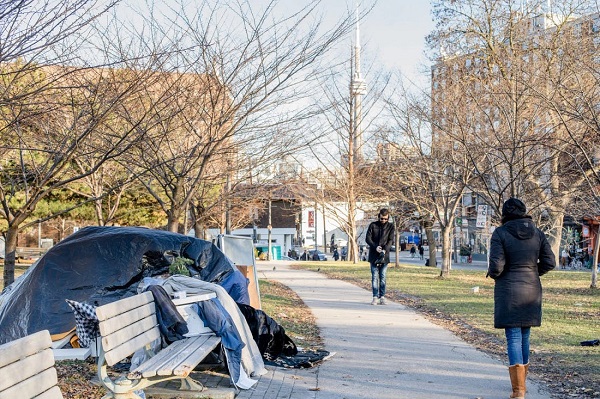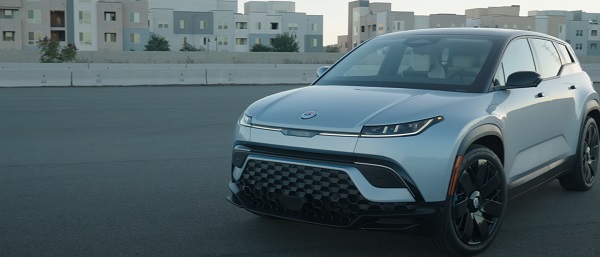Addictions
Man jailed for trafficking diverted safer supply drugs, sparking fresh debate over B.C. drug policies

Nanaimo drug trafficker’s case is further evidence of safer supply diversion. But some sources say even diverted drugs reduce harm
In early May, 68-year-old Ronald Schilling of Nanaimo, B.C., was sentenced to three years in prison for trafficking street drugs such as fentanyl and meth — as well as government-supplied opioids.
When authorities had arrested Schilling two years earlier, they had found him in possession of more than 80 government-supplied opioid pill bottles labeled with other patients’ names.
Those pills had been dispensed to patients under B.C.’s “prescribed alternatives” program, more commonly known as safer supply. The program aims to reduce overdose deaths by dispensing pharmaceutical opioids to drug users as an alternative to toxic street drugs.
In Schilling, patients of this program had found a drug dealer who was willing to give them harder drugs — such as fentanyl — in exchange for their prescription opioids. Schilling would in turn sell their prescription opioids to others.
“Mr. Schilling preyed upon people who were taking the safe supply drug,” Provincial Court Judge Karen Whonnock said during the sentencing hearing.
Schilling’s case is further evidence that safer supply opioids are making their way to the streets — and having unintended negative consequences. However, some sources say even diverted pills reduce harm if they flood the market with safer drugs.
‘Upside Down’
Schilling, a former charity worker, developed a cocaine addiction after the sudden death of his partner. He ultimately turned to drug trafficking to fund his addiction, according to his lawyer.
In court, the prosecution described Schilling as operating a mid-level drug trafficking scheme that exploited B.C.’s safer supply program.
Schilling coordinated with multiple dealers to source both illicit and prescription drugs, and had at least three individuals working under him. His text messages showed he would arrange to meet clients near Nanaimo’s Outreach Pharmacy to trade potent street drugs for the prescribed medications they had just received.
He operated under the name “Upside Down Inc.” — “down” being a street reference to fentanyl — and had business cards to match. To reassure users that the street drugs were safe, he would have them tested at a local overdose prevention site.
‘Predatory behaviour’
While Schilling’s case is unusual, it adds to the growing body of evidence that provincial safer supply programs are not always being used as intended.
In one example, a B.C. government report released in February revealed that more than 60 pharmacies were involved in a kick-back scheme, offering patients cash or rewards to fill safer supply prescriptions they did not need. Some of those drugs were then sold on the black market.
Collen Middleton, a co-founder of the Nanaimo Area Public Safety Association, refers to safer supply drugs as the “perfect consumer product.”
“They are a product that produces its own demand, because it’s addictive,” said Middleton, whose neighbourhood association is a vocal critic of safer supply.
One of Middleton’s concerns is that safer supply drugs are presented as safe, despite being addictive themselves. He says this makes them an effective gateway to more dangerous street drugs like fentanyl.
“Those drugs are being marketed as safe to kids … [so] you’re bringing more people into using addictive drugs, more abuse, more predatory behaviour toward a vulnerable segment of the population,” he said.
The B.C. Ministry of Health told Canadian Affairs in an emailed statement that it takes the “diversion of prescription medications … very seriously.”
“The unauthorized distribution is illegal and puts the public at risk,” it said.
In response to the B.C. pharmacy scandal, the province tightened its protocols for dispensing prescription opioids. All new and most existing patients must take prescription opioids under the supervision of health-care professionals, a protocol known as witnessed dosing. In rare cases, existing clients may continue to take their doses offsite if the prescriber views the risk of diversion as low.
Mixed evidence
In its statement to Canadian Affairs, B.C.’s health ministry also said its safer supply program “plays an important role in reducing substance use-related harms” and can lower overdose risk by as much as 91 per cent.
This figure comes from a 2024 B.C. study published in the British Medical Journal. That study found individuals prescribed pharmaceutical opioids early in the pandemic were 91 per cent less likely to die from any cause in the week after receiving at least four days of safer supply opioids, compared to a control group.
The study only tracked outcomes during the week following prescription fills. It did not verify whether individuals took the opioids as prescribed.
A study published in April in The Lancet Public Health shows B.C.’s safer supply programs are linked to improved short-term health outcomes, including fewer overdoses and hospital visits.
However, a population-level study in JAMA Health Forum found no significant reduction in overdoses or mortality associated with B.C.’s safer supply and decriminalization policies. It also suggested possible increases in emergency department visits and hospitalizations.
Comprehensive long-term research on the health impacts of Canadian safer supply programs is limited.
Creating a market
Some sources say the diversion of prescription opioids may be less harmful than the alternatives.
“If you could replace [street] drugs with safer pharmaceutical alternatives, people’s needs would be met,” said Perry Kendall, B.C.’s former provincial health officer and a long-time harm reduction advocate.
“They wouldn’t have to turn to the illicit market, and their risk of a toxic drug overdose would be significantly reduced.”
In Kendall’s view, Schilling was in some ways functioning as a harm-reduction worker.
“[Schilling] was kind of offering a harm reduction service, as well as supplying people with the drugs they wanted,” Kendall said.
Kendall’s views are echoed in a 2023 B.C. government review that notes diversion of safer supply drugs to people already at risk of drug poisoning may be beneficial. But the review also acknowledges that diversion to users who would not otherwise use unregulated drugs is harmful.
Still, Kendall acknowledged a fundamental issue: “[Safer supply opioids don’t] really give you the same high [as fentanyl]. So if you can trade [them] to … get what you’re looking for, which is fentanyl, then that’s what you will do.”
Leonard Krog, the mayor of Nanaimo, says it is clear that, within Nanaimo, B.C.’s policies to help drug users are making it easier for dealers to sell their toxic drugs.
“We have a safe injection site next to City Hall, and there’s no question dealers are coming down here and they’re selling their stuff, because the market’s right here,” said Krog.
But Kendall warns that pulling back on decriminalization and safer supply programs creates a dangerous gap.
“The daftest thing you can do is create a market of desperate people and then fail to fill it,” said Kendall. “Somebody’s going to meet those needs — and they’re not going to be law-abiding citizens.”
Krog is unconvinced.
“If we make it easier for the wolves to successfully exploit the sheep, is that a good thing?”
This article was produced through the Breaking Needles Fellowship Program, which provided a grant to Canadian Affairs, a digital media outlet, to fund journalism exploring addiction and crime in Canada. Articles produced through the Fellowship are co-published by Break The Needle and Canadian Affairs.
Subscribe to Break The Needle
Addictions
Canada must make public order a priority again

A Toronto park
Public disorder has cities crying out for help. The solution cannot simply be to expand our public institutions’ crisis services
[This editorial was originally published by Canadian Affairs and has been republished with permission]
This week, Canada’s largest public transit system, the Toronto Transit Commission, announced it would be stationing crisis worker teams directly on subway platforms to improve public safety.
Last week, Canada’s largest library, the Toronto Public Library, announced it would be increasing the number of branches that offer crisis and social support services. This builds on a 2023 pilot project between the library and Toronto’s Gerstein Crisis Centre to service people experiencing mental health, substance abuse and other issues.
The move “only made sense,” Amanda French, the manager of social development at Toronto Public Library, told CBC.
Does it, though?
Over the past decade, public institutions — our libraries, parks, transit systems, hospitals and city centres — have steadily increased the resources they devote to servicing the homeless, mentally ill and drug addicted. In many cases, this has come at the expense of serving the groups these spaces were intended to serve.
For some communities, it is all becoming too much.
Recently, some cities have taken the extraordinary step of calling states of emergency over the public disorder in their communities. This September, both Barrie, Ont. and Smithers, B.C. did so, citing the public disorder caused by open drug use, encampments, theft and violence.
In June, Williams Lake, B.C., did the same. It was planning to “bring in an 11 p.m. curfew and was exploring involuntary detention when the province directed an expert task force to enter the city,” The Globe and Mail reported last week.
These cries for help — which Canadian Affairs has also reported on in Toronto, Ottawa and Nanaimo — must be taken seriously. The solution cannot simply be more of the same — to further expand public institutions’ crisis services while neglecting their core purposes and clientele.
Canada must make public order a priority again.
Without public order, Canadians will increasingly cease to patronize the public institutions that make communities welcoming and vibrant. Businesses will increasingly close up shop in city centres. This will accelerate community decline, creating a vicious downward spiral.
We do not pretend to have the answers for how best to restore public order while also addressing the very real needs of individuals struggling with homelessness, mental illness and addiction.
But we can offer a few observations.
First, Canadians must be willing to critically examine our policies.
Harm-reduction policies — which correlate with the rise of public disorder — should be at the top of the list.
The aim of these policies is to reduce the harms associated with drug use, such as overdose or infection. They were intended to be introduced alongside investments in other social supports, such as recovery.
But unlike Portugal, which prioritized treatment alongside harm reduction, Canada failed to make these investments. For this and other reasons, many experts now say our harm-reduction policies are not working.
“Many of my addiction medicine colleagues have stopped prescribing ‘safe supply’ hydromorphone to their patients because of the high rates of diversion … and lack of efficacy in stabilizing the substance use disorder (sometimes worsening it),” Dr. Launette Rieb, a clinical associate professor at the University of British Columbia and addiction medicine specialist recently told Canadian Affairs.
Yet, despite such damning claims, some Canadians remain closed to the possibility that these policies may need to change. Worse, some foster a climate that penalizes dissent.
“Many doctors who initially supported ‘safe supply’ no longer provide it but do not wish to talk about it publicly for fear of reprisals,” Rieb said.
Second, Canadians must look abroad — well beyond the United States — for policy alternatives.
As The Globe and Mail reported in August, Canada and the U.S. have been far harder hit by the drug crisis than European countries.
The article points to a host of potential factors, spanning everything from doctors’ prescribing practices to drug trade flows to drug laws and enforcement.
For example, unlike Canada, most of Europe has not legalized cannabis, the article says. European countries also enforce their drug laws more rigorously.
“According to the UN, Europe arrests, prosecutes and convicts people for drug-related offences at a much higher rate than that of the Americas,” it says.
Addiction treatment rates also vary.
“According to the latest data from the UN, 28 per cent of people with drug use disorders in Europe received treatment. In contrast, only 9 per cent of those with drug use disorders in the Americas received treatment.”
And then there is harm reduction. No other country went “whole hog” on harm reduction the way Canada did, one professor told The Globe.
If we want public order, we should look to the countries that are orderly and identify what makes them different — in a good way.
There is no shame in copying good policies. There should be shame in sticking with failed ones due to ideology.
Our content is always free – but if you want to help us commission more high-quality journalism,
consider getting a voluntary paid subscription.
Addictions
No, Addicts Shouldn’t Make Drug Policy

By Adam Zivo
Canada’s policy of deferring to the “leadership” of drug users has proved predictably disastrous. The United States should take heed.
[This article was originally published in City Journal, a public policy magazine and website published by the Manhattan Institute for Policy Research]
Progressive “harm reduction” advocates have insisted for decades that active users should take a central role in crafting drug policy. While this belief is profoundly reckless—akin to letting drunk drivers set traffic laws—it is now entrenched in many left-leaning jurisdictions. The harms and absurdities of the position cannot be understated.
While the harm-reduction movement is best known for championing public-health interventions that supposedly minimize the negative effects of drug use, it also has a “social justice” component. In this context, harm reduction tries to redefine addicts as a persecuted minority and illicit drug use as a human right.
This campaign traces its roots to the 1980s and early 1990s, when “queer” activists, desperate to reduce the spread of HIV, began operating underground needle exchanges to curb infections among drug users. These exchanges and similar efforts allowed some more extreme LGBTQ groups to form close bonds with addicts and drug-reform advocates. Together, they normalized the concept of harm reduction, such that, within a few years, needle exchanges would become officially sanctioned public-health interventions.
The alliance between these more radical gay rights advocates and harm-reduction proponents proved enduring. Drug addiction remained linked to HIV, and both groups shared a deep hostility to the police, capitalism, and society’s “moralizing” forces.
In the 1990s, harm-reduction proponents imitated the LGBTQ community’s advocacy tactics. They realized that addicts would have greater political capital if they were considered a persecuted minority group, which could legitimize their demands for extensive accommodations and legal protections under human rights laws. Harm reductionists thus argued that addiction was a kind of disability, and that, like the disabled, active users were victims of social exclusion who should be given a leading role in crafting drug policy.
These arguments were not entirely specious. Addiction can reasonably be considered a mental and physical disability because illicit drugs hijack users’ brains and bodies. But being disabled doesn’t necessarily mean that one is part of a persecuted group, much less that one should be given control over public policy.
More fundamentally, advocates were wrong to argue that the stigma associated with drug addiction was senseless persecution. In fact, it was a reasonable response to anti-social behavior. Drug addiction severely impairs a person’s judgement, often making him a threat to himself and others. Someone who is constantly high and must rob others to fuel his habit is a self-evident danger to society.
Despite these obvious pitfalls, portraying drug addicts as a persecuted minority group became increasingly popular in the 2000s, thanks to several North American AIDS organizations that pivoted to addiction work after the HIV epidemic subsided.
In 2005, the Canadian HIV/AIDS Legal Network published a report titled “Nothing about us without us.” (The nonprofit joined other groups in publishing an international version in 2008.) The 2005 report included a “manifesto” written by Canadian drug users, who complained that they were “among the most vilified and demonized groups in society” and demanded that policymakers respect their “expertise and professionalism in addressing drug use.”
The international report argued that addiction qualified as a disability under international human rights treaties, and called on governments to “enact anti-discrimination or protective laws to reduce human rights violations based on dependence to drugs.” It further advised that drug users be heavily involved in addiction-related policy and decision-making bodies; that addict-led organizations be established and amply funded; and that “community-based organizations . . . increase involvement of people who use drugs at all levels of the organization.”
While the international report suggested that addicts could serve as effective policymakers, it also presented them as incapable of basic professionalism. In a list of “do’s and don’ts,” the authors counseled potential employers to pay addicts in cash and not to pass judgment if the money were spent on drugs. They also encouraged policymakers to hold meetings “in a low-key setting or in a setting where users already hang out,” and to avoid scheduling meetings at “9 a.m., or on welfare cheque issue day.” In cases where addicts must travel for policy-related work, the report recommended policymakers provide “access to sterile injecting equipment” and “advice from a local person who uses drugs.”
The international report further asserted that if an organization’s employees—even those who are former drug users—were bothered by the presence of addicts, then management should refer those employees to counselling at the organization’s expense. “Under no circumstances should [drug addicts] be reprimanded, singled out or made to feel responsible in any way for the triggering responses of others,” stressed the authors.
Reflecting the document’s general hostility to recovery, the international report emphasized that former drug addicts “can never replace involvement of active users” in public policy work, because people in recovery “may be somewhat disconnected from the community they seek to represent, may have other priorities than active users, may sometimes even have different and conflicting agenda, and may find it difficult to be around people who currently use drugs.”
Subscribe for free to get BTN’s latest news and analysis – or donate to our investigative journalism fund.
The messaging in these reports proved highly influential throughout the 2000s and 2010s. In Canada, federal and provincial human rights legislation expanded to protect active addicts on the basis of disability. Reformers in the United States mirrored Canadian activists’ appeals to addicts’ “lived experience,” albeit with less success. For now, American anti-discrimination protections only extend to people who have a history of addiction but who are not actively using drugs.
The harm reduction movement reached its zenith in the early 2020s, after the Covid-19 pandemic swept the world and instigated a global spike in addiction. During this period, North American drug-reform activists again promoted the importance of treating addicts like public-health experts.
Canada was at the forefront of this push. For example, the Canadian Association of People Who Use Drugs released its “Hear Us, See Us, Respect Us” report in 2021, which recommended that organizations “deliberately choose to normalize the culture of drug use” and pay addicts $25-50 per hour. The authors stressed that employers should pay addicts “under the table” in cash to avoid jeopardizing access to government benefits.
These ideas had a profound impact on Canadian drug policy. Throughout the country, public health officials pushed for radical pro-drug experiments, including giving away free heroin-strength opioids without supervision, simply because addicts told researchers that doing so would be helpful. In 2024, British Columbia’s top doctor even called for the legalization of all illicit drugs (“non-medical safer supply”) primarily on the basis of addict testimonials, with almost no other supporting evidence.
For Canadian policymakers, deferring to the “lived experiences” and “leadership” of drug users meant giving addicts almost everything they asked for. The results were predictably disastrous: crime, public disorder, overdoses, and program fraud skyrocketed. Things have been less dire in the United States, where the harm reduction movement is much weaker. But Americans should be vigilant and ensure that this ideology does not flower in their own backyard.
Subscribe to Break The Needle.
Our content is always free – but if you want to help us commission more high-quality journalism,
consider getting a voluntary paid subscription.
-

 National10 hours ago
National10 hours agoCanada’s birth rate plummets to an all-time low
-

 Crime9 hours ago
Crime9 hours agoPierre Poilievre says Christians may be ‘number one’ target of hate violence in Canada
-

 Alberta8 hours ago
Alberta8 hours agoJason Kenney’s Separatist Panic Misses the Point
-

 Automotive11 hours ago
Automotive11 hours agoBig Auto Wants Your Data. Trump and Congress Aren’t Having It.
-

 Aristotle Foundation2 days ago
Aristotle Foundation2 days agoEfforts to halt Harry Potter event expose the absurdity of trans activism
-

 Bruce Dowbiggin2 days ago
Bruce Dowbiggin2 days agoCanada’s Humility Gene: Connor Skates But Truckers Get Buried
-

 Energy2 days ago
Energy2 days ago“It is intellectually dishonest not to acknowledge the … erosion of trust among global customers in Canada’s ability to deliver another oil pipeline.”
-

 Energy2 days ago
Energy2 days agoIn the halls of Parliament, Ellis Ross may be the most high-profile advocate of Indigenous-led development in Canada.





